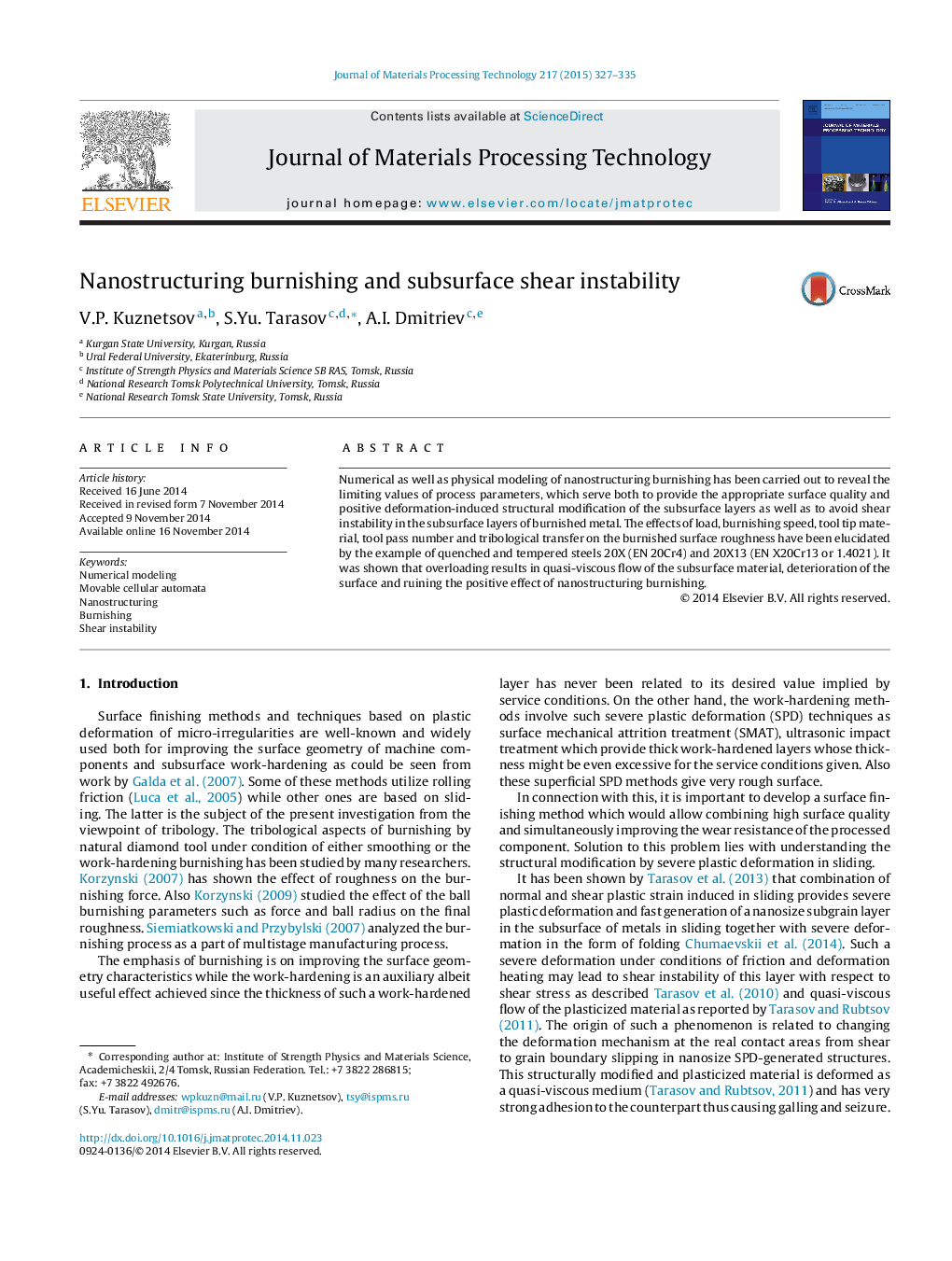| Article ID | Journal | Published Year | Pages | File Type |
|---|---|---|---|---|
| 7177263 | Journal of Materials Processing Technology | 2015 | 9 Pages |
Abstract
Numerical as well as physical modeling of nanostructuring burnishing has been carried out to reveal the limiting values of process parameters, which serve both to provide the appropriate surface quality and positive deformation-induced structural modification of the subsurface layers as well as to avoid shear instability in the subsurface layers of burnished metal. The effects of load, burnishing speed, tool tip material, tool pass number and tribological transfer on the burnished surface roughness have been elucidated by the example of quenched and tempered steels 20X (EN 20Cr4) and 20X13 (EN X20Cr13 or 1.4021). It was shown that overloading results in quasi-viscous flow of the subsurface material, deterioration of the surface and ruining the positive effect of nanostructuring burnishing.
Related Topics
Physical Sciences and Engineering
Engineering
Industrial and Manufacturing Engineering
Authors
V.P. Kuznetsov, S.Yu. Tarasov, A.I. Dmitriev,
